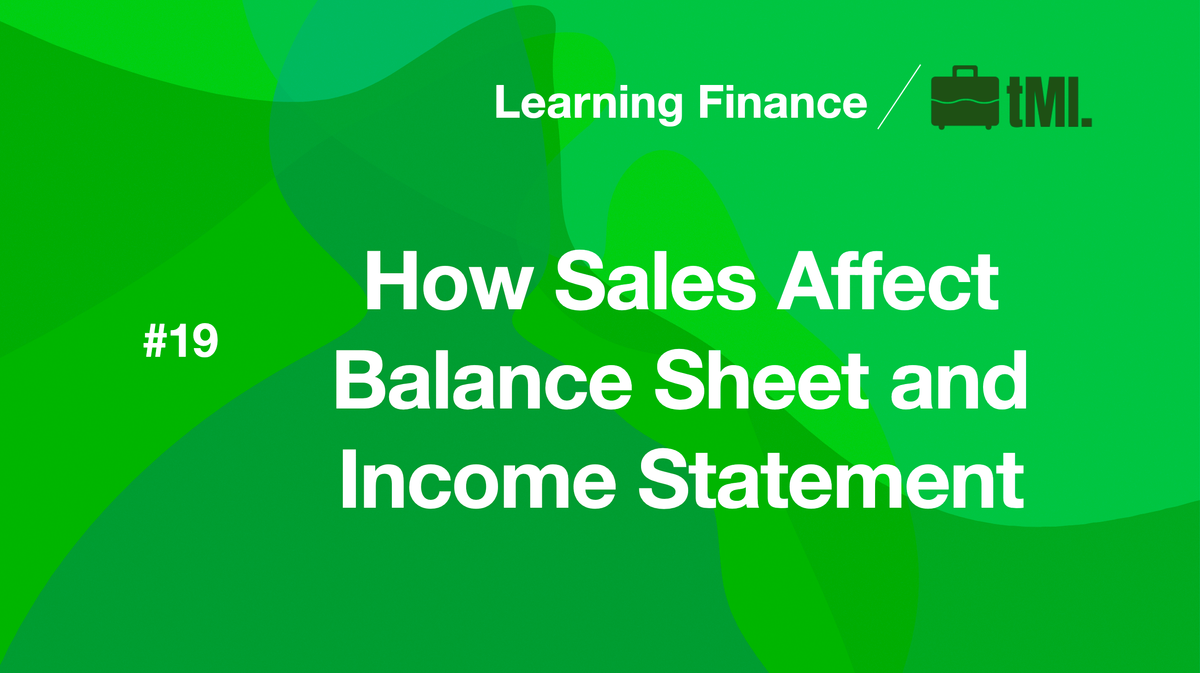How Sales Affect Balance Sheet and Income Statement
Once you make a sales, you move some of your inventory (balance sheet) into cost of goods sold (income statement). But how does a sale affect these financial statements exactly? Read more.

From our previous episodes of using our fictional company to learn how economic activities impact the balance sheet (episode #14 and #15), our company has procured raw materials, invested in fixed assets, and has hired labor to produce goods. Now that our products are produced, it is time for us to sell them.
Let's say our company has landed a client and signed the contract with the customer for a sum of 43 million dollars. While trying to land this contract, we agreed that the client would only need to pay 30 million dollars for receiving the products. The other 13 million dollars will be paid in another few months once all the implementation and running are done. The total cost of these goods is 31 million dollars.
Let's see how the economic activity affects financial statements.
How sales affect balance sheet and income statement
This economic activity is a little bit complicated, so let's review it from the beginning.
First, we signed a contract of 43 million dollars with the customer and delivered the goods to the customer. But the customer has only paid us 30 million dollars at the time of the transaction. Should we record 43 million or 30 million as our revenue on the Income Statement?
The answer is 30 million dollars. But why is that?
When discussing the basic ideas about Income Statement, we have mentioned that the recognition of revenue does not necessarily require receiving cash. Recognition of revenue depends on how much the customer agrees to pay, and whether the goods or services are transferred to the customer.
In this example, our company has already sent the goods to the customer, so the ownership has been transferred, even though they agreed to pay only partial of the total price at the time of transaction. So in this case, revenue should be 43 million dollars, not just the 30 million cash that we received.
But where are the other 13 million dollars?
Well, because we granted the customer a few months of time for them to pay, this 13 million dollars are recorded as accounts receivable on the balance sheet.

Is this the whole transaction? Not yet.
Before we made the sales, our products have already been manufactured and stored in the warehouse as inventory. Once we made the sales, the goods no longer belong to us, meaning that we should deduct the cost of these products from inventory. At the same time, we should put the same number in cost of goods sold.

The whole transaction is now complete. However, for the observant eyes, a new problem has appeared. Let's take a look at the assets first.
After this transaction, our cash increased by 30 million dollars, and our accounts receivable increased by 13 million dollars. At the same time, our inventory decreased by 31 million dollars, resulting in a total increase of 12 million dollars worth of assets.
However there is no change in liabilities or shareholders' equity.
The basic formula that assets equal liabilities plus shareholders' equity seems to be broken.
We've mentioned that this formula must be obeyed at all times, and when it's not balanced, the only reason will be that the balance sheet is done incorrectly.

So did we actually miss anything?
As a matter of fact, we didn't.
What happened to the company is that when we sold our 31 million dollars worth of products for 43 million dollars, we made a profit for the sales. After deducting expenses and taxes, etc., and after profit distribution to the shareholders, we get undistributed profit, which belongs to shareholders' equity on the balance sheet.
Our current status is only temporary; once we finish the distribution of profits, we will see how the balance sheet got balanced - again.
How to understand undistributed profit
We can take undistributed profit as an integrated substitution of the whole Income Statement and profit distribution. That is to say, we can use the amount of undistributed profit to replace the entire Income Statement and the process of profit distribution. After we deduct profit distribution, we will get an undistributed profit, which will be recorded on the balance sheet. The Balance Sheet will then become balanced again.




